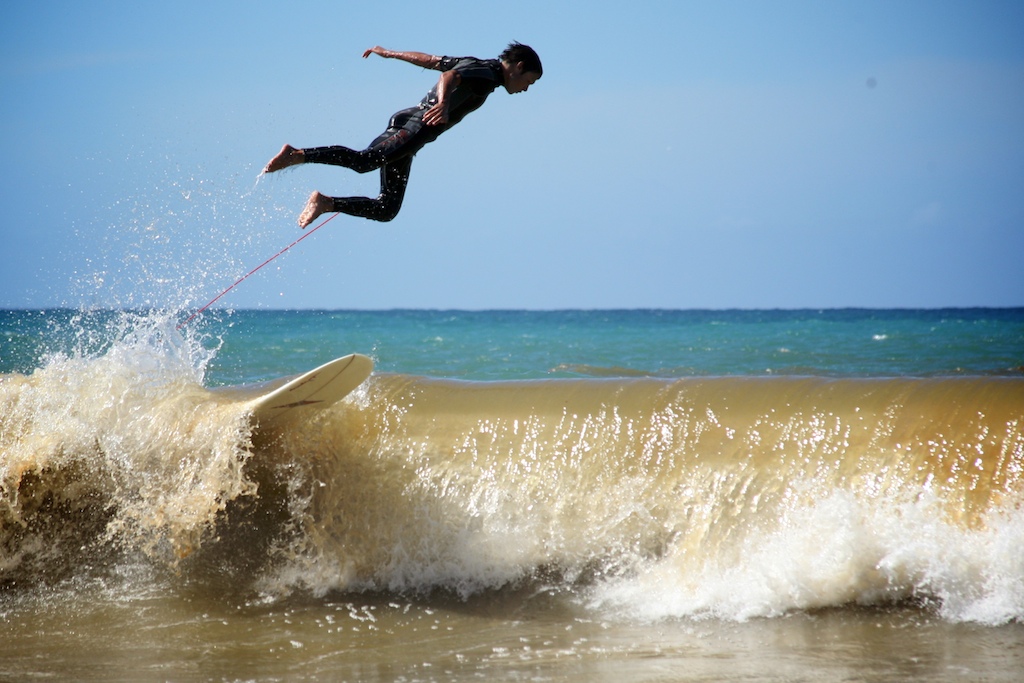BS”D
Shiur 3
1- We learned the Ta”z in סעיף ב that answers the perplexing question we discussed last week.
See below the entire Ta”z as translated by Dani. Our thanks to him.
3- We discussed the חיד”א and his Sefer on Shulchan Aruch called ברכי יוסף.

The Chida
Here is a great article on him.
We also mentioned his amazing work שם הגדולים – see inside here.
The Chida’s note we discussed concerned a Mikvah that was housed inside a steam bath house. The Mikvah was losing an inch or two of water every day. Suspecting a leak, they emptied the water and checked for a hole or a crack and found none. The Chida quotes sources that one can rely that the steam and humidity inside the Mikvah building was causing the water to evaporate on a daily basis.

4- We related the story of the yungerman whose כוס של אליהו , to his children’s amazement was very slowly being emptied.

…Eliyahu was here.
We spoke about the story of the Guter Yid that was crying during davening and arouse his chassidim to Teshuva. Turns out he wasn’t crying due to his תפילה but because he was simply in pain due to a medical condition.
Was their teshuva valid?………
5- We began to learn the תיקוני מקוה of the Alter Rebbe where he begins that the Mikvah should never have a water level (even if there is 40 סאה) lower than about 9” above the navel. That ensures that the person טובל is complete immersed in the water even if he just bends down at the waist.

Mikveh in Gerona, Spain
——————————–
ט”ז ס”ק ג.
Thank you Dani Chitrik.
free translation
ואם רבו הנוטפין על הזוחלין כו’. – but if the quantity of the rain water is greater than the flowing [spring] water, and similarly if the quantity of rain water is greater than the river water it does not purify as flowing water.
Preface: In general,זוחלין is water that is not still i.e. moving[1]. אשבורן means gathered in one place i.e. in a pit or hole.
- A mikvah of rainwater can only be metaher if it’s אשבורן, if it’s זוחלין it’s invalid. This is derived in Toras Kohanim[2] from the verse אַךְ מַעְיָן וּבוֹר מִקְוֵה מַיִם – Only a spring or a put or a gathering of water, shal be Tahor. The word אַךְ comes to exclude a הקיש- connection between a mikvah and a מַעְיָן – that only a well or river are kosher when they are זוחלין , whereas a mikvah of rain water is only kosher when it is באשבורן.
Hence a ma’ayan is effective even though it is running water (zochalin), whereas a mikvah’s waters must be stationary (ashboren).
- There is a dispute amongst the תנאים whether large amount of rain makes a river invalid. The reason to פסל it is because the river is now a majority rainwater and would hence need to be אשבורן (ר”ח רמב”ם and ראב”ד מהר”ם hold that this is the halacha).
On the other hand, if a river increases from its own bedrock during the rainy season and its own water is the majority water [‘it’s bedrock’ added the new water] it would therefore be kosher even while זוחלין . (ר”ת סמ”ג א”ז and מהרי”ק סמ”ק are more lenient with this opinion lehalacha)
- שאובין is drawn water, it is invalid for a Mikvah.
- One can convert שאובין into Kosher mikvah water through processes mentioned bellow. One can only convert זוחלין into אשבורן by trapping the water into a single place/hole.
The Taz discusses a question regarding the ruling of trickling or rainwater invalidating a river:
כתוב בת”ה סי’ רנ”ד – The Terumas Hadehsen Writes in his responsa in Siman 254 שמעתי מקשים – I’ve heard it asked, people have asked this question מאי שנא נוטפין דפסלי זוחלין ברבייתן – Why is it that when rainwater, which is valid water for a mikvah, drips into a river it invalidates it as running water when it becomes the majority ומפקי’ להו מתורת זוחלין – And it thus removes it from being a permissible running water mikvah, and is invalid unless it is gathered
באשבורן ומים שאובי’ דפסלי המקוה לגמרי – Yet, drawn water which completely
invalidates a mikvah ואפ”ה אם היה כבר מקוה של מ’ סאה ונפלו לתוכה – a Mikvah of 40 Saah and the drawn water falls into it אפי’ אלף סאין שאובין בבת אחת לא יפסלוהו – Even if it’s volume of drawn water is a thousand, and poured at one time, it does not nullify it making it invalid, כמ”ש בסימן זה סעיף ט”ו במקוה ובמעיין אפי’ כל שהוא– As in mentioned later on in the Seif סעיף ט”ו regarding a mikvah which is 40 Saah or any size well; that one may pour any amount of drawn water into them and they are kosher, even though the quantity is greater than the water originally in there.
The Taz answers:
ותירץ שם בת”ה – The Teumas Hadeshen answers there דכתב הרא”ש דהטעם – Quoting the reasoning from the Rosh that: שאין שאובין פוסלין המקוה דהוי כאילו נזרעו בתוכה – Sheuvin, drawn water does not invalidate a mikvah because it is as if it was implanted into it. Once the Sheuvin touches the water of the mikvah it is transformed into kosher mikvah water through a process called Zeri’ah [3] (or Hashakah)[4] והרי הם כמחוברים וכשרים – And it’s as if they are connected and Kosher ע”כ ניחא הקושיא – And the question is answered. דעיקר פסול שאובין
הוא דהויין כתלושין ע”י אדם – Because the invalidity of drawn water is because it was affected and detached through a human, not through nature such as rainwater ולכך מהני בהו זריעה ויתחשבו מחוברים – And therefore, once it goes through Zeri’ah it’s now considered combined with the kosher Mikvah water and is thus valid אבל פסול דנוטפים שאינם מטהרים בזחילה אינו מטעם שהם תלושים – However the invalidity of rain water is not because it’s detached, באשבורן דהא מקוה שלימה מנוטפים כשרה ואפ”ה אין מטהרים ע”י זחילה – For as We see that a full Mikvah of rainwater is kosher, but not when it is zochalin הלכך לא מהני בהו זריעה שנזרעו במי’ זוחלין – Therefore the principal of Zeri’ah would not help when it is implanted into זוחלין water דלא מהני אלא לשוויי תלוש למחובר ע”כ – As it only helps in situations of connecting detached water to attached water:
The Taz brings a different answer from him Father in Law[5]
ומו”ח ז”ל תירץ קושיא דת”ה – And my father in law answered the question of the Terumas Hadehs דשאני שאובין שהם כשרים מן התורה – By answering that, drawn water is different than, נוטפין, because biblically drawn water is kosher, whereas נוטפין is invalid biblically כמבואר לקמן בסי’ זה – As is mentioned later on in this Siman משא”כ בפסול נוטפין שהוא מן התורה – whereas נוטפין is biblically invalid
The Taz questions both answers, by raising a general objection:
ותמיה לי אהנך תירוצים – I question these answers דהא בהדיא תנן בפ”ה דמקואות מעיין שהוא משוך כנדל והמשיכו הרי הוא כמו שהיה- For as it states in the fifth chapter of Mikvaos that water from a well which are conducted into channels [radiating like the feet of a centipede], if one added upon it and it continued flowing, it is thereby still as it was וזה קאי אנוטפין שריבה בו המעיין – And this addition that the Mishnah mentions is relating to rain water that was added כמ”ש ב”י בשם הר”ן כאן וגם הראב”ד שנביאנו בסמוך – As the Beis Yosef writes in the name of the Ran and the Rava”d that will be brought down shortly א”כ חזינן דאף בנוטפין מהני הכשר המעיין – Thus we see that even adding trickling or rainwater the ma’ayan validates the water.
The Taz now specifically questions the answer from the Terumas Hadehsen:
ומלבד זה ג”כ – And besides for the above general objection תמיה לי מה חילוק בין זה לזה – I am perplexed as to the difference between one and the other מה לי שהתלוש נעשה ע”י זה כמחובר או המחובר נעשה מחובר כמוהו – What does it matter if detached drawn water converts into non-drawn water by connecting through Zeri’ah, or if connected rain water becomes valid by connecting to kosher זוחלין water, thus becoming like kosher connected water just like it.
The Taz concludes and answers:
ונלע”ד לכאורה דקושיא מעיקרא ליתא דהא כתב בית יוסף בשם הראב”ד– It seems to me that there is no question at all as is seen from what the Beis Yosef writes in the name of the Ravad (who is meikel as mentioned above preface 2) (paragraph starting ובמה שרצה מהרי”ק ד”ה.)
The Taz first explains a contradiction from the Ravad:
שהקשה ממתני’ דנדל שזכרתי – On which he asked from the Mishnah of the centipede mentioned earlier דמשמע אף אם ריבה נוטפין על הזוחלין כשר -From which it seems that even if he added dripping water to זוחלין it is nonetheless kosher אהא דאמרינן בנהר פרת שמא ירבו הנוטפין על הזוחלין דש”מ דרבוי נוטפין פוסל והא פרת מעיין משוך הוא – On this that the Gemara mentions that women should not immerse in the Pras river the winter months because there may be more נוטפין than זוחלין – we thus see that dripping water to זוחלין is invalid, although it’s a mayan of moving water.
The Taz explains the answers to the contradiction from the Ravad:
ותירץ
דנהר פרת כשמגיע לבבל הוא כלה בקיץ – And the Ravad answers, this that the Gemara mentions that women should not immerse in the Pras river the winter months, is specifically talking about the Pras river when it reaches bavel. Since, when the water from the Pras river reaches Bavel it completely stops in the summer months it’s not connected anymore to the main river and it hence is now considered ashboren! ובימות הגשמים הגשמים רבין עליו וממשיכין אותו – and in the winter months when the rain builds up these dry rivers and builds them up ע”כ הוה כאילו היה המעיין עומד ואינו זוחל – And it is therefore as if the mayan is standing and not moving ashboren דאיתא בסיפא דמתני’ דנדל דבזה כשריבה נוטפין אינו מטהר בזחילה – Where it is mentioned in the latter part of the Mishna of the centipede that when there is more dripping water than river water it does not purify when it is zochalin ומזה דן הראב”ד דבכל הנהרות שמתמעטים בקיץ ובימות הגשמים מושכין ועושין נחלים אילך ואילך דשם לא מטהרים בזוחלין – And it is from here that the Ravad ruled that all rivers which diminish and decrease in the summer months, yet in the winter they expand into many streams, one does not purify themselves in them, however in a situation where the Mayan waters a relatively constant throughout the year one would be allowed to immerse even if the dripping or rainwater increased the Mayan in size וא”כ אין כאן קושיא של ת”ה דבאמת אי הוה מעיקרא כאן זוחלין ועכשיו נתרבו שם נוטפין ה”נ דמהני כיון שמעיין מושך הוא – And therefore there is no question from the Terumas Hadeshen, since if it was a valid mikvah/Mayan that was זוחלין and is now built up with dripping or rain water it would still be valid because it was always a flowing river.
The Taz raises another question:
אלא דקשה עדיין ממה דאיתא בסעיף ח’ – However there is still a question regarding that which is written in Seif 8 חוצה לו מותר מטעם שהמים המועטין מטהרין הפסולין המרובים כמו שכתבתי שם בשם הרא”ש – if a river leaks onto the edge of a vessel and into it, one may not immerse inside the vessel; but outside of it, – one is allowed to immerse in the water once it drips from the river into the vessel then again drips outside the vessel, because of the reasoning explained there that the small amount of valid water on the edge of the vessel validates the invalid water in the vessel, which therefore make the water leaving the vessel valid water. This is because they are connected directly to the spring through the water on the edge of the vessel. However, this would not be the case if there was a disconnect in the water, i.e. spring trickles into the vessel. וכן מסעיף י’ מעיין שהמשיכו לבריכה שיש בה נוטפין דחשוב כמעיין ואמאי לא נימא גם כאן שהזוחלין יטהרו הנוטפין – And also in Seif 10 A spring that ran into a pool of water that is pooled and standing still, has the rule of a spring, but if the head of the trickle has stopped, it returns to having the rules of a mikvah; but if the trickle of the spring returns and continues into it, it returns to having the rules of a spring. In both of these case why don’t we say here as well that the זוחלין validates the נוטפין.
The Taz answers:
ואחר העיון נ”ל לתרץ – After much deliberation it the answer seems to me – דהכא פסול מטעמא דחיישינן שהפשרת שלגים וגשמים יורדין ממקום גבוה שאצל שפת הנהר – That זוחלין does not validate the נוטפין because we are worried that when the snow and rain melts it falls from high places near the edge of the river, but not directly from the actual river ובזה אין חבור דקי”ל קטפרס אינו חבור – And in this case it is not considered connected as we hold the Halacha is that water falling vertically isn’t considered connected, it must be connected horizontally or directly וא“כ חיישינן שמא תטבול באותו מקום מדרון ושם אין חיבור להזוחלין הנמשכים למטה מן המעיין ונמצא שטובלת במקום פסול בזוחלין – And therefore, we are worried lest she might immerse in that specific place of the slope where there is no connection to the זוחלין which are bellow it in the river and she is thus immersing in a place that is invalid for זוחלין ויש ראיה לזה ממ”ש המרדכי הלכות נדה – And there is proof for this from what the Mordechai write in Hilchos Niddah וז”ל – And these are his words ראבי”ה הקשה היאך טובלין – Ravya”h asked how is it permissible to immerse בנהר והלא קטפרס דרך ירידתו אינו חבור – In a river, for a slope of water falling vertically isn’t considered connected a connection and should thus be invalid because it’s זוחלין וי”ל דוקא למעלה אין לטבול כו’ עכ”ל – And he answers that specifically above one should not immerse. We are not worried about a slope of vertical fall of water when one is immersing in the actual river bed, however if there is a disconnect or something similar one should be careful not to immerse there. ע”כ הכא נמי יש חשש שמא למעלה הוה כולו מי גשמים ולא מהני חבור דלמטה למי שטובל למעלה – So too here, we are worried that above it is all rain water and the connection does not help in the situation when one immerses above the riverbed.
[1] חֲמַת זֹחֲלֵי עָפָר – דברים לב כד – venom of crawling things of the dust.
[2] תורת כהנים שמיני ט
[3] This term literally means “planting.” Conceptually, the water is replanted into a body of natural water, thus removing its status as mayim she’uvim, just as a seed achieves a new status when it is planted in the ground.
[4] Hashakah (literally, “kissing”) means that two bodies of water can become one entity by their waters meeting each other. For example, if the waters of a valid mikvah touch the waters of an adjacent pool of tap water, this “kiss” unites them as one body.
[5] Rabbi Yoel Sirkes, known as the BaCH







